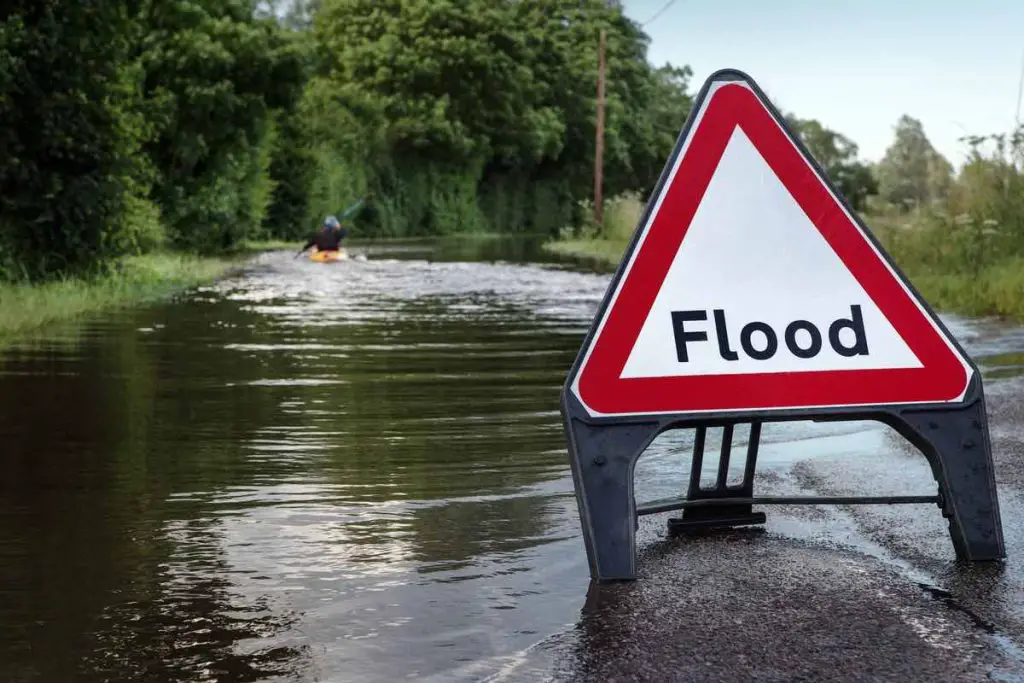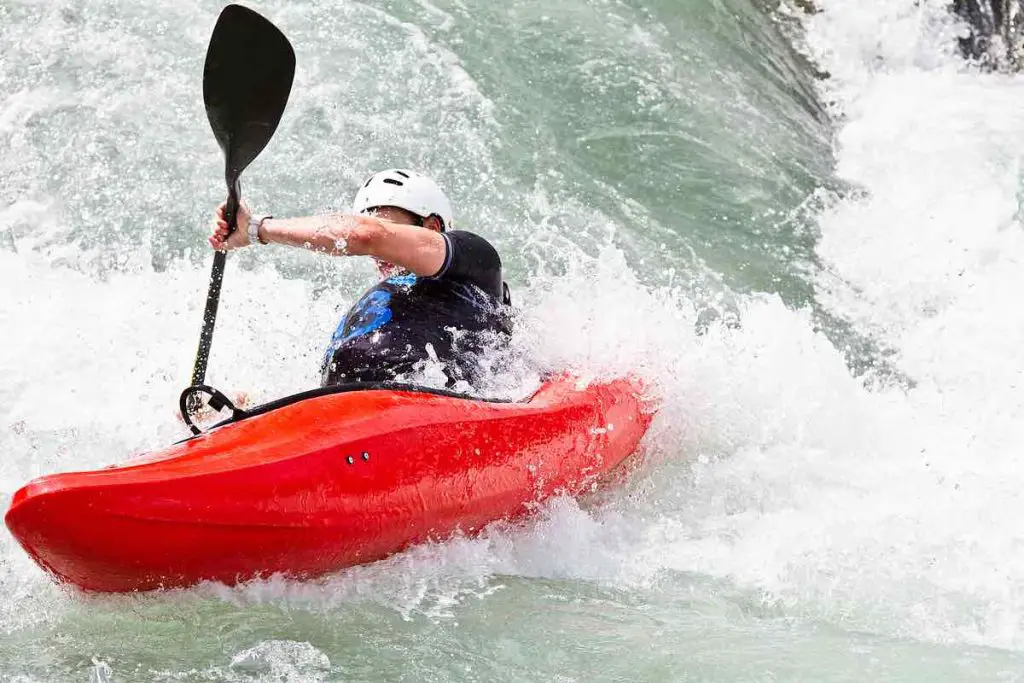Scupper holes provide self-bailing to a kayaker whose sit-on-top kayak is beginning to pool with water. Too much water inside the kayak will cause issues with balance and stability. The purpose of these holes is to allow water to escape. But should water come through the scupper holes in a kayak?
Water coming through scupper holes in a kayak is normal. While the purpose of scupper holes is to allow water to drain out, the holes will also allow water to enter the kayak. This is not a cause for concern, albeit there may be times when plugging the holes is your best option.
In this article, I will explain how scupper holes work. I will also discuss how to stop water from entering your kayak through the scuppers and when to use scupper plugs.

How Scupper Holes Work
When out on the water kayaking, water somehow always seems to make its way into the kayak. Whether it be through scuppers, splashing, rain, or dripping in off of the paddle, water can accumulate fairly quickly. Water must be removed when it pools at the bottom of a kayak. If it isn’t, the kayaker risks capsizing due to the weight of the water on board.
Scupper holes are designed to drain water so that the kayaker doesn’t have to do it manually. Often there are 6 to 8 scuppers, though some kayaks only have four, which is the minimum number a kayak can safely have.
Scuppers are strategically placed throughout the bottom of a sit-on-top kayak. These are located near the bow and stern of the kayak as well as in between. The placement and amount of scupper holes make draining the water more efficient.
How To Stop Water From Entering Through Scuppers
While out kayaking, there may be times when you notice you are getting a significant amount of water coming in from the scupper holes of your kayak. Aside from the discomfort of getting a wet pants, this unwelcome water can affect your kayak’s buoyancy.
Use Scupper Plugs To Block the Water
Fortunately, this is an easy problem to fix. To stop water from coming in through the scuppers of your kayak, you can purchase a pack of scupper plugs. Scupper plugs are used to plug the scuppers of your vessel by fitting snugly into the scupper hole so that water cannot pass through.
Water may still splash into your kayak from the sides or if it is raining while you are out paddling. If water begins to pool, simply pull out the scupper plugs to allow the water to drain from your kayak. Once sufficiently drained, you can put the plugs back into the holes and repeat this process as needed.
If the water coming in through the scuppers bothers you because you don’t want your bottom half being soaked while out paddling, you may consider only plugging the center and rear scuppers.
This will limit the water coming in through the scuppers, so you don’t get as wet while keeping the front scuppers open, still allowing water to drain out as needed.
What To Know When Buying Scupper Plugs
When purchasing scupper plugs, you must be aware of a few things. Knowing what to look for specifically can aid you in finding the correct fit the first time.
Scupper Plugs Have Different Types
Scupper plugs can be made from different materials, be different shapes, and come in different sizes. When buying scupper plugs, you should first do your research. Check to see if there are scupper plugs for your particular type of kayak.
Finding the Correct Size Scupper Plugs
Some kayaks require specific-sized scupper plugs, while others take universal scupper plugs. Universal scupper plugs fit several different kayaks and are easy to find. To find out what size you need, measure the diameter of the scupper hole on your kayak.
For more information, you can check out my article discussing whether all kayak scupper plugs are universal. It takes a deep look at the different types of scupper plugs and how you can make your own DIY scupper plug. [Are All Kayak Scupper Plugs Universal?]
When Should You Plug Your Scupper Holes?
Although plugging scupper holes isn’t necessary, there may be situations when using scupper plugs is beneficial. You should always have scupper plugs in your kayak just in case water conditions shift.
When Maximum Weight Capacity Is Close to Being Reached
The kayak will sit lower in the water when kayaking with a heavy load. This will cause more water to enter from the scuppers at the bottom of your vessel. To help resolve this problem, you can use scupper plugs. Using scupper plugs when the weight in your kayak is at its maximum will help your kayak sit higher in the water. This results in less water making its way into your kayak.
When the Weather Is Cold
Even on cold days, it’s nice to get out on the water and enjoy some kayaking. However, it’s important to dress for the weather, so wear a dry suit. No matter how calm the water can be, there will still be splashing at times.
And if the weather is cold, the water will also be cold. To limit the amount of water that comes into your kayak from beneath, use scupper plugs to stay dry and have an enjoyable time out paddling.
When the Water Is Choppy
Kayaking on a windy day can cause choppy water and more giant waves. This can be dangerous and should only be done by expert paddlers proficiently trained in self-rescue techniques.
However, the weather can change quickly, even if you’ve checked the forecast before heading out on the water. When the water turns choppy, more water will come up through the scupper holes from beneath your kayak and over the sides.
To minimize how much comes up through the scupper holes, you can put the scupper plugs into the scuppers. If too much water is coming in from the sides, unplug the scuppers where the water is pooling so that it can drain, then return the plugs to the scuppers.

Conclusion
While it is normal for some water to come up through scupper holes in a kayak, there are times when plugging the holes serves you best. Most of the time, this is not an issue of concern; however, keeping scupper plugs on hand when kayaking would be a wise call from a safety standpoint.
Sources
- Bending Branches: Why Your Fishing Kayak Has Scupper Holes
- KG Adventures: Kayak Filling With Water? Determine Why and How to Fix it
- Jackson Kayak: Scupper Plugs 101: Do I Need Them?
- Flat Bottom Boat World: Why Does My Kayak Fill With Water?
- Three Sister Kayak Rental: What are Scupper Holes